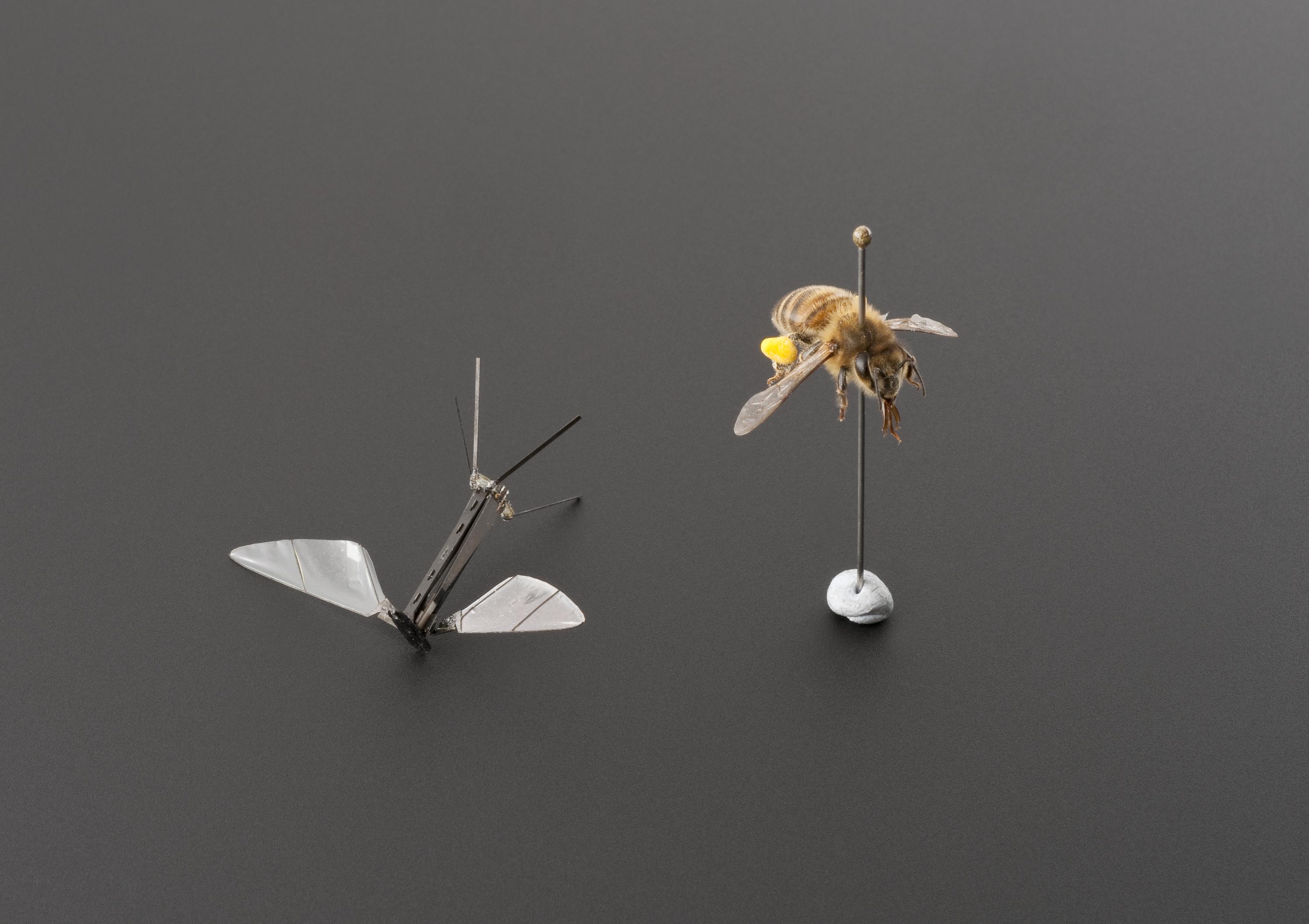
You may have heard over the last few years that the bee population across the globe has been declining at an alarming rate. Here in the UK, 13 species of bee have gone extinct since the 1990s, and 35 more species are under threat.
This has been attributed to several causes, including colony collapse, parasites, pesticides and even electromagnetic radiation from wireless signals. Whatever the reasons, a lack of bees could spell disaster for us.
Bees are one of the top pollinating insects. Without them around, there would be a much smaller variety of plant life on our planet. This wouldn’t just include flowers but would also affect the variety of fruits and vegetables available to us. This is why many people are worried about declining bee numbers.
Perhaps this tiny bee-bot could be the solution. The engineers at the Wyss Institute for Biologically-Inspired Engineering at Harvard University cite pollination as one of the potential uses for these bee-bots (alongside acting as tiny surveillance drones—scary!).
So, how does this bee-droid measure up against the real thing? It might not look very bumble-y, but the robo-bee is about the same size as a biological bee. It measures less than half the size of a paperclip, with a wingspan of 3 cm, and weighs just 100 mg.

© The Science Museum / SSPL. Creative Commons BY-NC-SA
Given its size, it’s impressive what this bee-bot can do. Its wings can work independently of each other, giving it an incredible range of motion. However, unlike a real bee the bot needs a cable to power its movement because there are no batteries small enough for it to run on. So, that’s one point in favour of biological bees, who, according to my research, are completely wireless.
However, this drawback is forcing the engineers at Harvard to think creatively and find ways to make their bee-bot more energy efficient. One solution they’ve developed is a small electrode patch at the top of the ‘head’ of the bee. The bot can use this patch to stick to almost any surface via static electricity. This allows it to conserve energy, as flying is very energy demanding. They hope that methods such as this and increasingly small batteries means that one day it will be possible to power the bee-droid without a cable.
One way that the robo-bee does improve on the original is that it can swim. Not only that, the bot can ignite gas inside itself to shoot out of the water, and so can go from flying, to swimming, then back to flying. The Weiss Institute have made a video to show off this amazing feature:
A future upgrade the engineers at Harvard are working on for their bees is colony behaviour. The aim is that eventually the bots will be capable of working together to achieve their tasks, just like real bees. For now, though, a future where we see robot bees buzzing away in our gardens might be a way off.
These Robo-Bees are just one solution to the declining bee problem. There are others that seek not to replace bees, but to understand them and hopefully stop their declining numbers.
One experiment that’s being conducted right here in Manchester is by Mi-idea. They’ve been strapping tiny sensors onto bees. These ‘bee backpacks’ monitor the movements of the bees, see where they go and what they’re doing, and the data being gathered will allow us to better understand the environment the bees are working in. This in turn can help us target conservation efforts to increase bee populations. Here’s a video explaining the bee backpacks:
Another project is using robots to work alongside bees. This video shows a robot that has been developed to communicate with bees by copying their dance movements. Through this it can inform bees where sources of food can be found, which is increasingly important as habitats for bees are reduced.
As amazing as these projects are, we can all try do our part to support bees in our local area. If you’re interested in what you can do, charities such as Friends of the Earth offer tips to help our buzz-y friends.
One comment on “Could the future be full of tiny robot bees?”
Comments are closed.